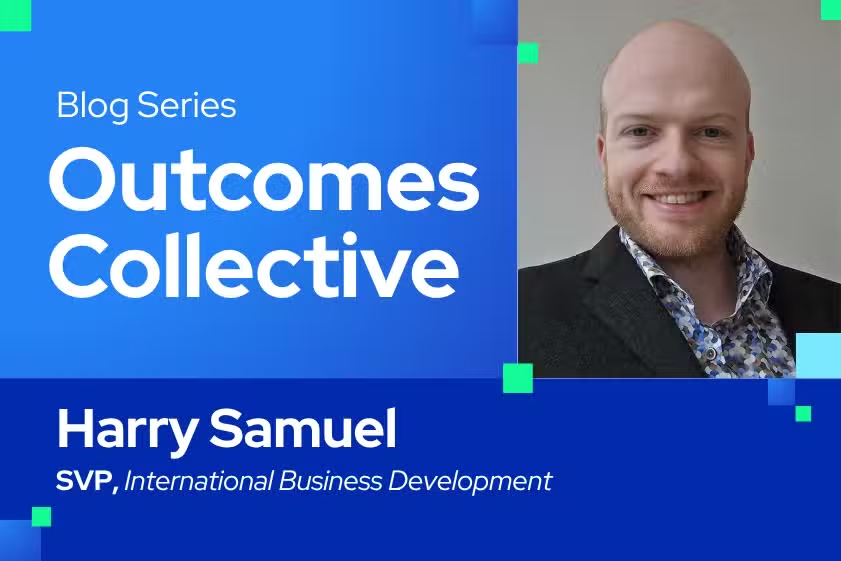By Dewi Paulino, VP, Marketing
Outcomes matter. Everyone wants to drive more revenue and boost their ROI. Success will always be a universal goal.
But how do you get there? How do you know if you’re actually boosting ROI and by how much? How do you determine what to measure to understand growth? Those questions aren’t always easy to answer, which is why we brought together leading measurement experts for an afternoon of engaging discussion about the current and future state of retail outcomes measurement.
At our inaugural Attention to Retail event, I was joined on stage by Collette Spagnolo, Head of Marketing Analytics at DoubleVerify, Charlie Weiss, Head of Business Development & Strategy at EDO, Inc., and Stuart Schwartzapfel, EVP, Media Partnerships at iSpot for a discussion titled, Metrics that Matter: The Buy & Sell Side Unite for a Retail Outcomes Revolution. The discussion wasn’t just dynamic; it was remarkably candid, offering our guests several truly enlightening moments.
Redefining Measurement in a Privacy-First World
I set the stage by noting that a 2024 joint Affinity Solutions and AdExchanger report found that 46% of advertisers and marketers cited measurement as their top challenge. What’s more, a Bain report found only 6% of advertisers fully trust retailer-reported media metrics. The challenge lies in acquiring relevant and trustworthy metrics and then effectively using them to measure outcomes, all while navigating persistent fragmentation and ensuring compliance with privacy regulations.
I could sense a shared understanding in the room by the subtle nods in the audience. These weren’t new challenges, and the importance of outcomes itself was hardly a revelation. Yet, as our panelists spoke, it became palpably clear that the current buzz around the word “outcomes” felt different, almost charged. We dove headfirst into the heart of that commotion to uncover the source. What’s driving this increased emphasis? Has the very definition of “outcomes” profoundly shifted within our industry?
The panelists agreed that it’s not that the definition of outcomes has changed; it’s how we measure them that has undergone a dramatic shift. This evolution is driven by several factors, not least of which is the increasing consumer awareness of privacy. Spagnolo shared that according to a study conducted by DoubleVerify, while 42% of consumers report an improved online shopping experience due to relevant ads, more than half express significant privacy concerns about the very same highly tailored advertisements. This creates a delicate balancing act for marketers: “Are we freaking the consumer out?” she asked, “and are they getting value out of the advertising?” Finding this equilibrium is paramount.
The Rise and Riddle of Clean Rooms
A major player in this evolving measurement landscape is the “clean room.” These secure, privacy-compliant environments allow different datasets to be analyzed without sharing raw, personally identifiable information. While clean rooms are “all the rage,” as Stuart Schwartzapfel of iSpot observed, their implementation and measurement are often “used in almost a blind manner.” He likened the current state of clean rooms to the “Wild West,” with much innovation and experimentation, but also a lack of standardized understanding.
The future, however, hinges on their interoperability. In addition to the importance of integrating with walled gardens, Spagnolo emphasized that “clean rooms talking to each other will be really important in the near future. How they interoperate will be a key part of what marketers need to wrap their minds around in the next few years.” This seamless communication between clean rooms will unlock deeper insights and more robust measurement capabilities.
Attribution: From Expense to Narrative
Attribution, the process of assigning credit for conversions to various touchpoints, isn’t new. However, as Schwartzapfel noted, the industry needs “things to rally around” to truly innovate. He highlights a crucial point: “Attribution is what you get if you spend money; if they can innovate on it, it becomes a key part of your narrative.” This suggests a shift from attribution as merely a cost-tracking exercise to a powerful tool for crafting compelling stories about marketing effectiveness and ROI.
Weiss reinforced this idea, suggesting that “the definition of attribution/outcomes is a natural evolution.” He points to a critical metric that is gaining increasing prominence: lifetime customer value. This shift towards understanding the long-term impact of marketing efforts on customer relationships is a testament to the maturation of the outcomes revolution. It’s a metric that resonates across the industry, with Weiss noting that “the largest social platforms, the largest news companies, and the largest RMNs want this [the outcomes revolution] to happen.” This broad industry buy-in signals a collective push towards more sophisticated and holistic measurement.
The Path Forward
At the start of the conversation, I noted that the word “outcomes” was the current “cool kid on the block,” driven by the confluence of technological advancements, evolving consumer expectations, and a desire for more sophisticated measurement. While challenges remain, particularly around the standardization of metrics across platforms and the interoperability of clean rooms, the collective enthusiasm from industry leaders suggests a promising future. The focus is shifting from simply tracking ad spend to understanding actual incrementality and long-term value generated by marketing efforts, ultimately turning attribution from a mere expense into a powerful narrative for business growth.







